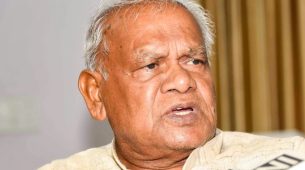Inside The Surgical Strikes War Room In Myanmar hindustantimes.com
Inside a secret war room of an army mountain division, some 15 feet underground in the basement of a building on a hill, a two-star general in combat fatigues details the long-running security challenges Manipur faces and how insurgent safe havens across the border in Myanmar imperil the state’s stability. Phones are not allowed in Kautilya, the war room.
It was in this ops room, more than three years ago, that an Indian Special Forces officer briefed the military brass about the surgical strikes he had led against three insurgent camps in Myanmar.
The cross-border attack in which 40 to 50 insurgents were killed was ordered by the Modi government to avenge the massacre of 18 Indian Army soldiers in an ambush by Myanmar-based militants on June 5, 2015.
New Delhi later publicly acknowledged the combat action on foreign soil for the first time, announcing India’s muscular military response to the world.
But three years on, the threat to Manipur’s security from safe havens on Burmese soil is still a reality.
Major General VK Mishra, who heads the division, did not reveal the number of insurgent camps in Myanmar in his three-hour presentation in the war room last week, though he did touch upon the insurgents’ hit-and-run tactics in Manipur that shares a 398-km border with the neighbouring country. Two officials familiar with the matter in New Delhi, however, said on the condition of anonymity that there are 38 insurgent camps scattered across the border.
“Such camps allow insurgents to carry out strikes in the state and go back to Myanmar territory. That precludes the Indian armed forces from pursuing them there,” said Lieutenant General SL Narasimhan (retd), who commanded a corps in the north-east and is currently a member of the National Security Advisory Board.
The first account of the 2015 cross-border raid, led by a lieutenant colonel, was documented in India’s Most Fearless, a book authored by this correspondent and military affairs journalist Shiv Aroor. The book, which identifies the lieutenant colonel as ‘Oscar Delta’, says the officer spent the day (June 9) briefing the military leadership about the mission in the war room at the Leimakhong-headquartered 57 Mountain Division.
With digital clocks flashing Indian and Chinese local times above a giant screen behind him, Mishra shared details of the insurgent groups active in the state, how they generate funds through extortion, the frontal organisations pushing their cause, the infighting among the insurgent cadres and, most importantly, the challenges that the security forces face daily.
“There cannot be a one-size-fits-all strategy in this fight. We calibrate our operations based on the scenarios that are unfolding. The main aim is to degrade the combat potential of the insurgent groups,” said Mishra, an old north-east and Kashmir hand.
The motto of the 57 Mountain Division on a plaque overlooking the war room perhaps sums up the army’s strategy: Fight Clever, Fight to Win.
Huge charts depicting the positions and layout of Chinese People’s Liberation Army camps stand out in the spacious war room. Sun Tzu and General George S Patton wall quotes are also hard to miss.
It was from a helipad not too far from the war room that two army Dhruv helicopters took off on June 9, 2015 to fly the victorious commandos back to the base from a village bordering Myanmar.







Leave Your Comment